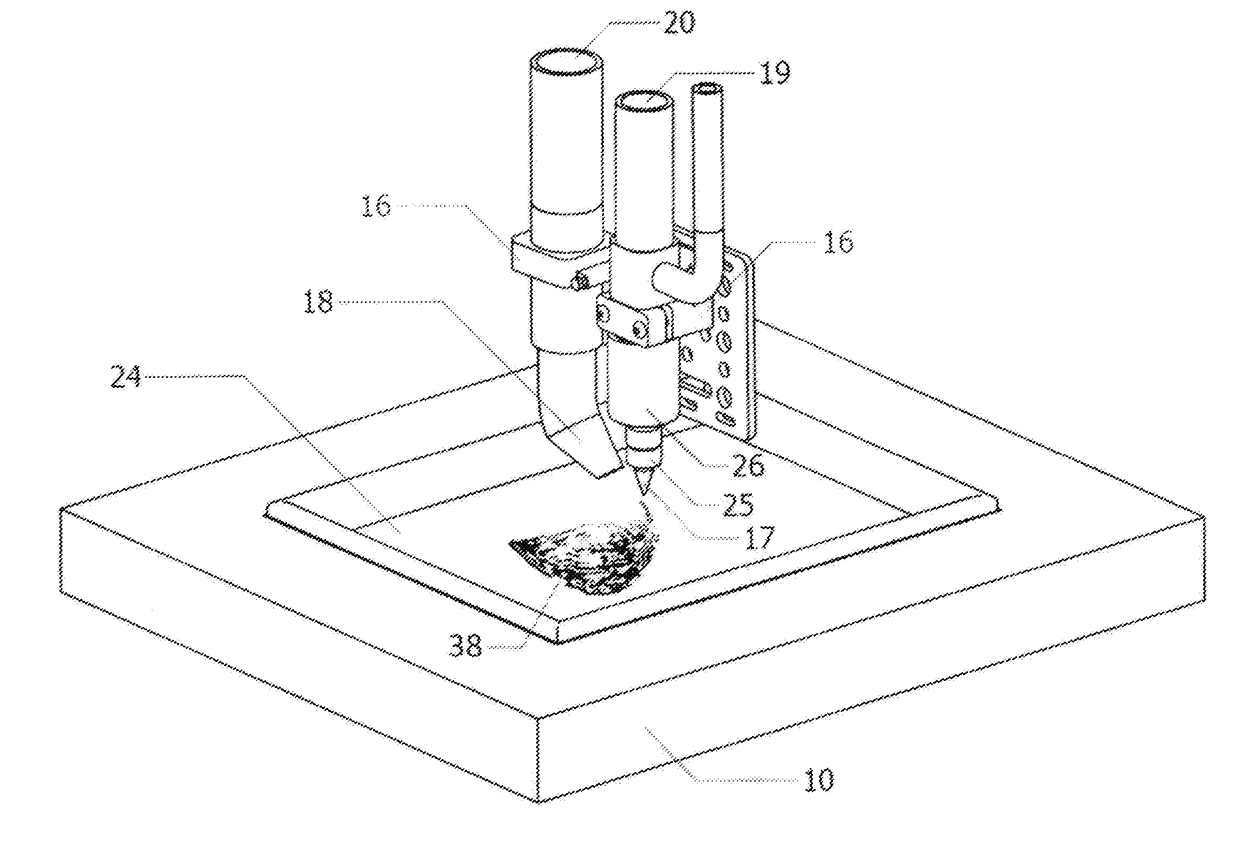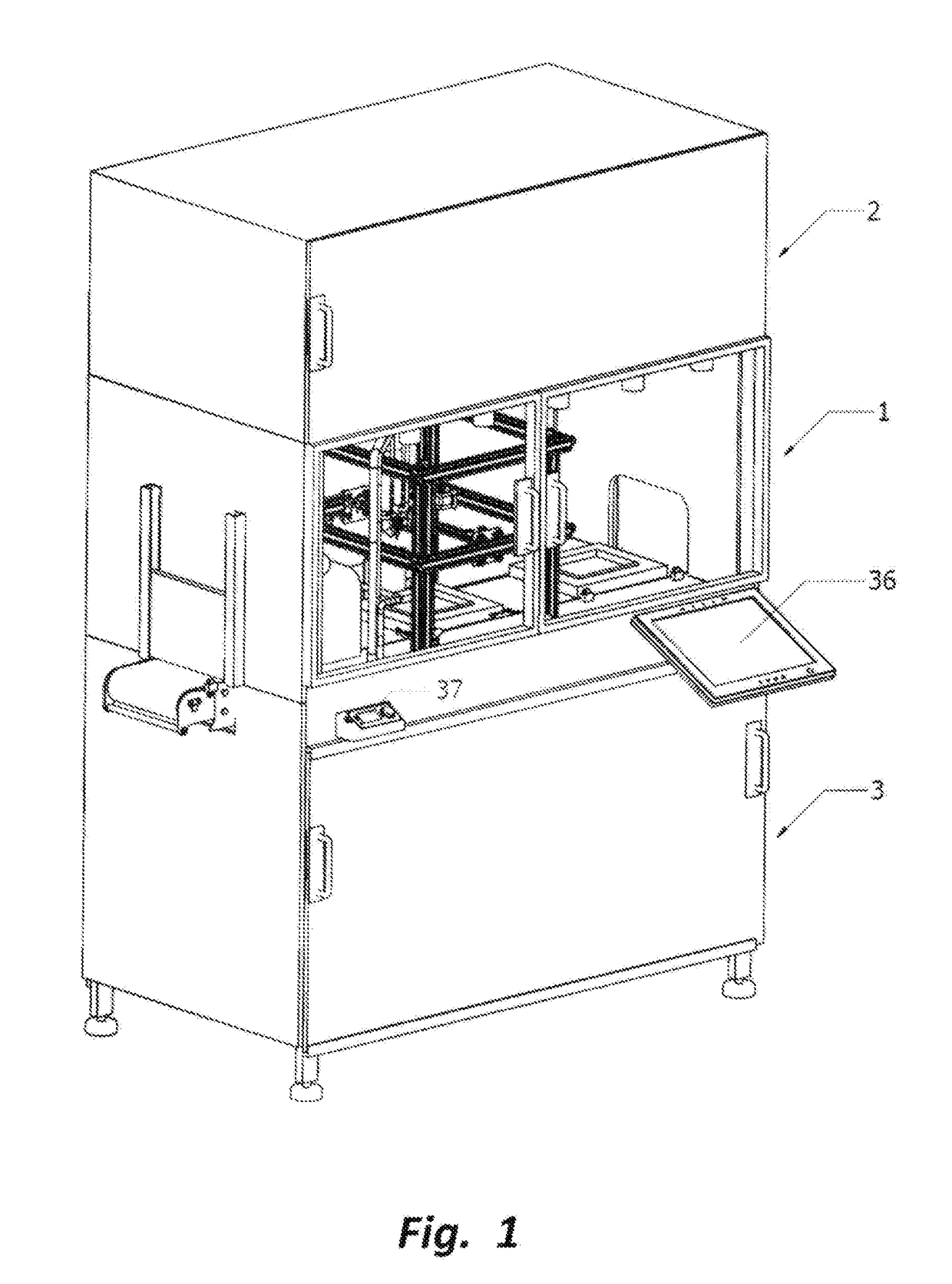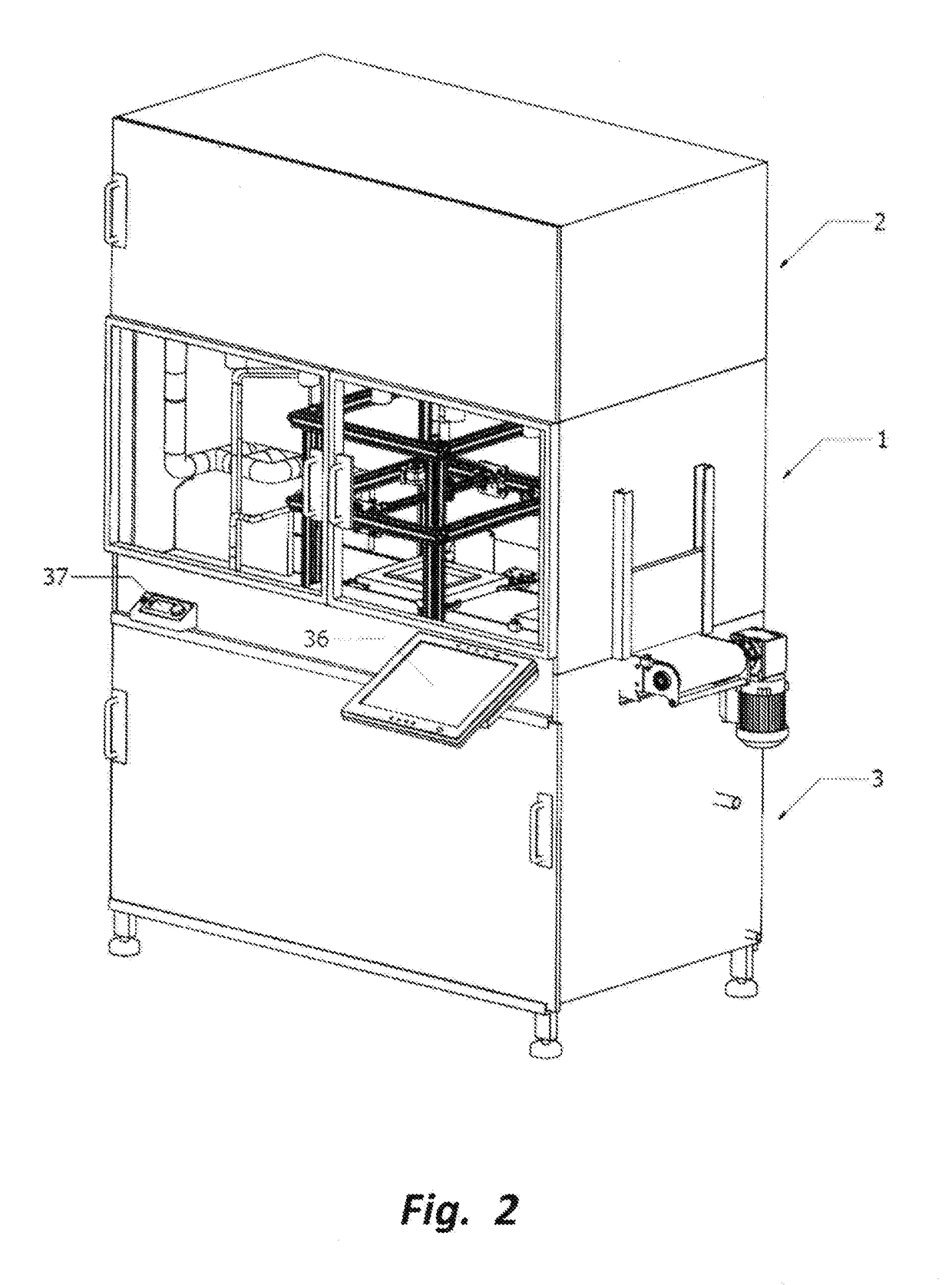Three Dimensional Printing of Biotic Material Originated from Swiftlet Edible Bird Nest
- Summary
- Abstract
- Description
- Claims
- Application Information
AI Technical Summary
Benefits of technology
Problems solved by technology
Method used
Image
Examples
example # 1
Example #1
[0076]According to example #1 of present invention as shown in FIG. 17, the method of printing biotic material based object from biotic material originated from swiftlet edible bird nest comprising of the following steps:[0077]a) preparing a fluid biotic material comprising of a blend of water and swiftlet edible bird nest particles;[0078]b) loading said fluid biotic material into a fluid biotic material reservoir 35 and connecting to a fluid biotic material deposition nozzle 17;[0079]c) setting up a printing programme by providing parameters of an object for printing or depositing;[0080]d) loading a plurality of deposition platforms 10 onto a conveyor at entry gate 4;[0081]e) transferring said deposition platform 10 to a waiting station 7;[0082]f) activating said printing programme at a Man-Machine Interface Unit (MMIU) 36;[0083]g) transferring said deposition platform 10 from said waiting station 7 to a depositing station 8;[0084]h) holding said deposition platform 10 at...
example # 2
Example #2
[0101]According to example #2 of present invention as shown in FIG. 18, the method of printing biotic material based object from biotic material originated from swiftlet edible bird nest comprising of the following steps:[0102]a) preparing a fluid biotic material comprising of a blend of water and swiftlet edible bird nest particles;[0103]b) loading said fluid biotic material into a fluid biotic material reservoir 35 and connecting to a fluid biotic material deposition nozzle 17;[0104]c) setting up a printing programme by providing parameters of an object for printing or depositing;[0105]d) loading a plurality of deposition platforms 10 onto an extended loading conveyor 45 and an enclosed returning conveyor system 44;[0106]e) transferring said deposition platform 10 to a waiting station 7;[0107]f) activating said printing programme at a Man-Machine Interface Unit (MMIU) 36;[0108]g) transferring said deposition platform 10 from said waiting station 7 to a depositing station...
example # 3
Example #3
[0132]According to example #3 of present invention as shown in FIG. 19, the method of printing biotic materials based objects from biotic materials originated from swiftlet edible bird nest comprising of the following steps:[0133]a) preparing a fluid biotic material comprising of a blend of water and swiftlet edible bird nest particles;[0134]b) loading said fluid biotic material into a fluid biotic material reservoir 35 and connecting to a fluid biotic material deposition nozzle 17;[0135]c) setting up a printing programme by providing parameters of an object for printing;[0136]d) loading a plurality of deposition platforms 10 onto an extended loading conveyor 45 and an enclosed low humidity returning conveyor system 50;[0137]e) transferring said deposition platform 10 to a waiting station 7;[0138]f) activating said printing programme at a Man-Machine Interface Unit (MMIU) 36;[0139]g) transferring said deposition platform 10 from said waiting station 7 to a depositing stati...
PUM
 Login to View More
Login to View More Abstract
Description
Claims
Application Information
 Login to View More
Login to View More - R&D
- Intellectual Property
- Life Sciences
- Materials
- Tech Scout
- Unparalleled Data Quality
- Higher Quality Content
- 60% Fewer Hallucinations
Browse by: Latest US Patents, China's latest patents, Technical Efficacy Thesaurus, Application Domain, Technology Topic, Popular Technical Reports.
© 2025 PatSnap. All rights reserved.Legal|Privacy policy|Modern Slavery Act Transparency Statement|Sitemap|About US| Contact US: help@patsnap.com



